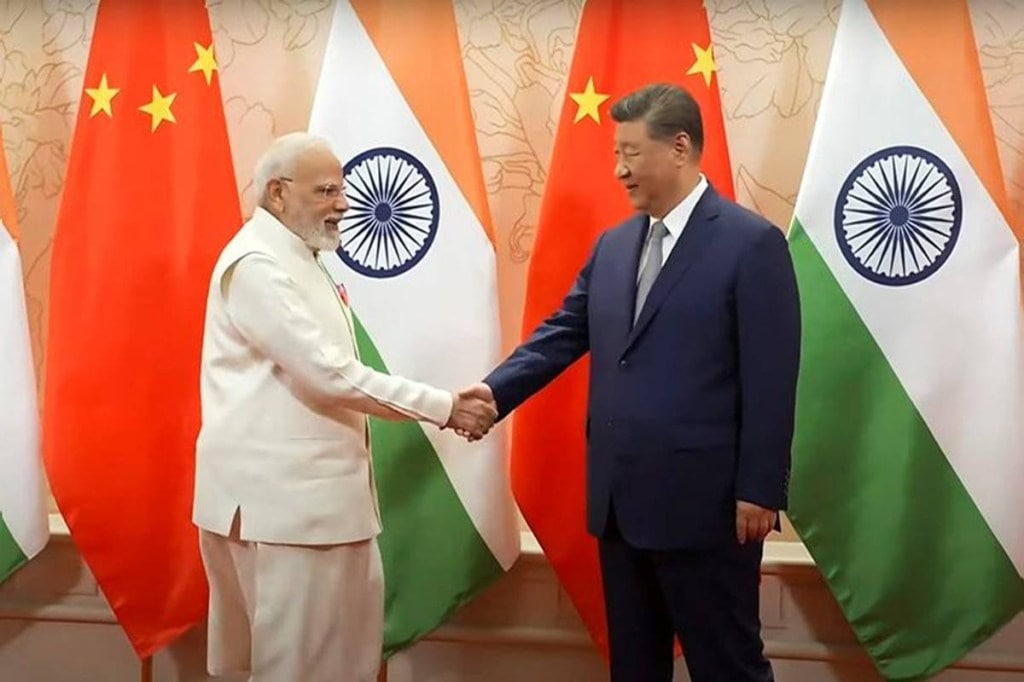The Prime Minister’s recent visit to China for the Shanghai Cooperation Organisation summit has brought renewed attention to India’s approach towards business relations with its northern neighbour. Since then, several ministers have spoken in different ways suggesting the need to reassess ties, indicating a gradual shift from the restrictive stance taken after the 2020 border clashes. That episode, marked by the Galwan incident, had strengthened the government’s resolve to curb Chinese investments.
The measures that followed were wide-ranging. Over 300 Chinese apps, including TikTok, were banned. More significantly, foreign direct investment rules were tightened through Press Note 3 which made it mandatory for companies from countries sharing a land border with India to seek prior approval before investing. The immediate impact was visible in the auto sector, where Great Wall Motor’s proposed acquisition of General Motors’ Talegaon plant had to be shelved, as approvals never came through. In parallel, Chinese vendors were barred from bidding for public projects without permission, and delays in visas for senior executives and engineers became routine.
Resetting the terms of engagement
If objectively seen in hindsight, the purpose of these steps seemed not to disengage from China entirely, but to reset the terms of engagement. In both automobiles and handsets, Chinese firms had built relatively closed systems. Their supply chains, distributors, and financiers were closely tied to the parent entities, leaving limited space for Indian participation. The government’s message was that this arrangement could not continue. If Chinese companies wanted to stay invested in India, they needed to open up, bring local partners on board, and align with national priorities such as exports and job creation. Press Note 3 provided the leverage to push for these changes.
The results are now evident. In handsets, where Chinese firms still command a large share of the market, the earlier distributor-driven model is being replaced by partnerships with Indian manufacturers. Xiaomi has tied up with Dixon Technologies and Optiemus for assembly and exports, while Oppo, Vivo, and Realme are moving in the same direction. The arrival of Apple and Samsung under the production-linked incentive scheme has added competitive pressure, but it is the regulatory push under Press Note 3 that seems to have compelled Chinese brands to adjust their approach in India.
A similar pattern is visible in the auto sector. While Great Wall had to withdraw, MG Motor, owned by SAIC, opted to adapt. It entered into a joint venture with Sajjan Jindal’s JSW Group to manufacture electric vehicles in India, with SAIC providing technology support and JSW taking the lead on operations. Once again, Press Note 3 created the context that sole control was no longer practical, and partnership with an Indian entity became the path forward.
Emerging models of collaboration
Taken together, these examples show that the broader policy goal of opening up previously closed systems and creating room for Indian partners has largely been met. The use of investment restrictions as a tool has achieved its purpose. It has shown that rather than keeping Chinese firms out altogether, India can let them operate under structures that are transparent, compliant, and include local stakeholders.
A similar model is unfolding in fast fashion. Shein, banned in 2020, returned through a licensing arrangement with Reliance Retail. Reliance runs the operations, ensures data is stored in India, and brings in domestic micro, small, and medium enterprises as suppliers. The plan is not only to serve the Indian market but also to export India-made Shein products to markets such as the US and UK. This indicates that even in consumer-facing sectors, workable models of collaboration are possible without compromising control.
The time is therefore right for the government to formalise this approach into a clearer, sector-specific policy. Joint ventures, licensing agreements, and contract manufacturing can become the standard format for Chinese participation in India. Within this framework, Indian partners can retain majority ownership, with additional checks where key management positions are foreign, similar to rules in telecom or finance. Over time, Press Note 3 can be fine-tuned. Strategic areas like defence, power, and minerals may remain under the approval route, while sectors such as handsets, auto, and retail can gradually shift back to the automatic route with safeguards.
Such a policy would balance pragmatism with national interest. China remains an important player in technology and manufacturing, and Indian consumers have consistently shown demand for its products. For Indian industry, the opportunity lies in structured partnerships that help it scale up technology capabilities and access global value chains, while ensuring that control and oversight remain with domestic stakeholders.
The trajectory of the past few years suggests that restrictions alone are not enough, but incentives backed by clear rules can work. Press Note 3 was never meant to be a permanent barrier; rather, it was a tool. Having used it to bring about structural changes, the government can now perhaps move towards a more predictable and transparent framework.
In effect, the government has already indicated a way forward. Handsets, automobiles, and even fashion retail now offer examples of models that combine Chinese inputs with Indian ownership. If formalised into policy, this can serve as a template across sectors. Engagement with China need not be viewed as a choice between complete disengagement and unregulated access. It can instead be about building structured partnerships on India’s terms, allowing both sides to benefit while strengthening India’s position.

